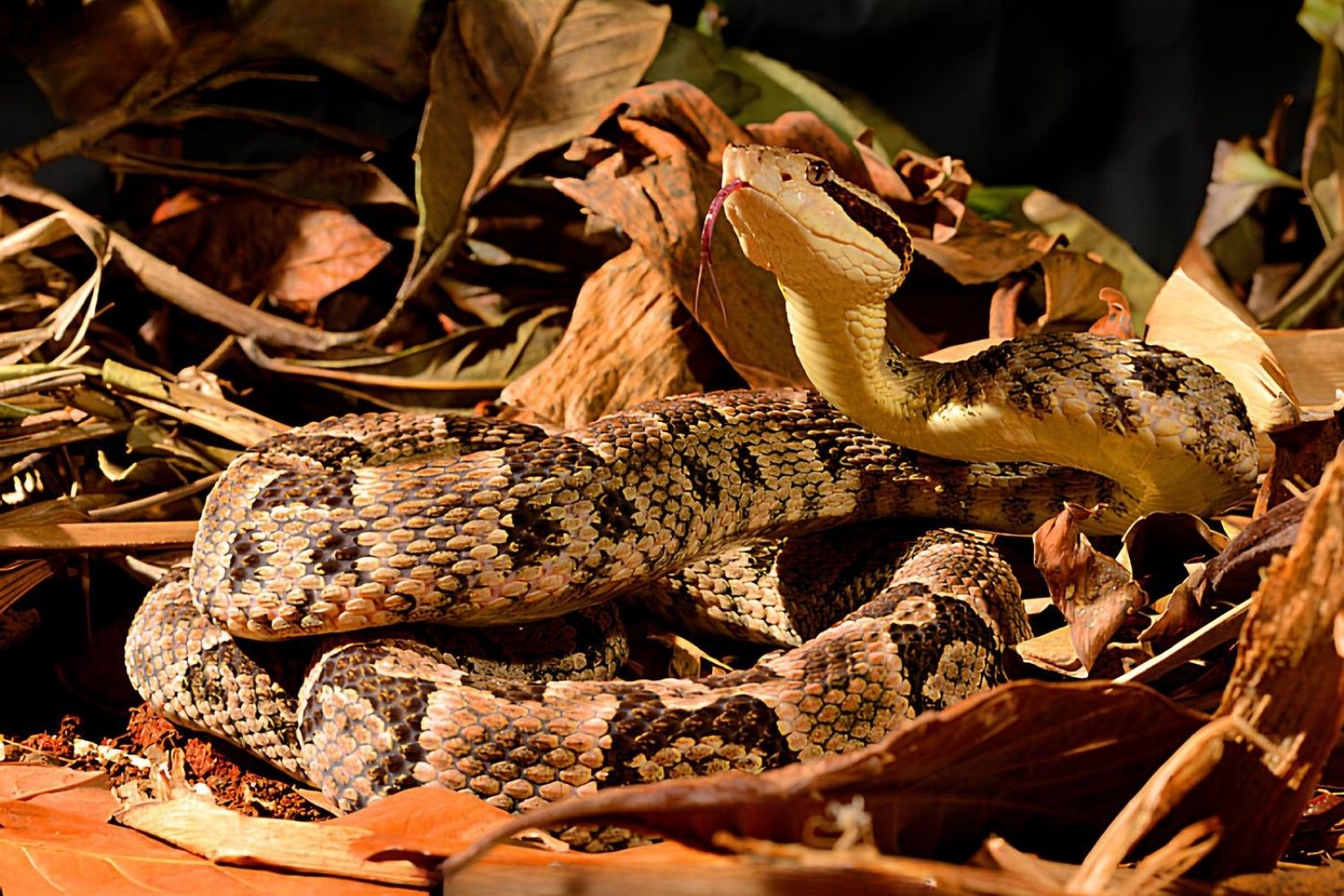
Envenomization by Bothrops lanceolatus, also known as the Martinique lancehead or fer-de-lance, is a serious medical condition caused by the bite of this venomous snake. Found primarily in Martinique, this snake's venom can cause severe symptoms, including pain, swelling, and even life-threatening complications. Understanding the risks and knowing how to respond to a bite can be crucial for anyone living in or visiting areas where this snake is found. Did you know that the venom of Bothrops lanceolatus contains a unique mix of toxins that can affect blood clotting and tissue integrity? Learning about these 25 facts will help you stay informed and prepared.
Key Takeaways:
- Bothrops Lanceolatus, found only in Martinique, has potent venom causing severe symptoms. Prompt medical treatment with antivenom is crucial for envenomization management.
- Prevention measures like avoiding snake habitats and wearing protective clothing can significantly reduce the risk of encountering Bothrops Lanceolatus.
What is Bothrops Lanceolatus?
Bothrops Lanceolatus, also known as the Martinique Lancehead, is a venomous pit viper species found exclusively on the Caribbean island of Martinique. This snake is infamous for its potent venom and the severe envenomations it can cause.
-
Endemic to Martinique: Bothrops Lanceolatus is found only on the island of Martinique, making it a unique species with a limited geographical range.
-
Pit Viper Family: This snake belongs to the pit viper family, characterized by heat-sensing pits located between the eyes and nostrils.
-
Distinctive Appearance: It has a robust body, a triangular head, and a pattern of dark brown or black markings on a lighter background.
Venom Composition and Effects
The venom of Bothrops Lanceolatus is a complex mixture of proteins and enzymes that can cause severe symptoms in humans. Understanding its composition and effects is crucial for medical treatment.
-
Hemotoxic Venom: The venom primarily affects the blood and tissues, causing hemorrhaging and necrosis.
-
Neurotoxic Components: Some components of the venom can affect the nervous system, leading to paralysis.
-
Coagulopathy: The venom can disrupt blood clotting, leading to uncontrolled bleeding.
-
Pain and Swelling: Envenomation often results in intense pain and significant swelling at the bite site.
Symptoms of Envenomization
Recognizing the symptoms of envenomization by Bothrops Lanceolatus is vital for timely medical intervention. These symptoms can vary in severity depending on the amount of venom injected.
-
Local Tissue Damage: Immediate pain, swelling, and bruising occur around the bite area.
-
Systemic Effects: Symptoms like nausea, vomiting, dizziness, and difficulty breathing can develop.
-
Hemorrhagic Blisters: Blisters filled with blood may form around the bite site.
-
Necrosis: Severe cases can lead to tissue death, requiring surgical intervention.
Treatment and Antivenom
Prompt medical treatment is essential to manage envenomization by Bothrops Lanceolatus. Antivenom is the primary treatment, but supportive care is also crucial.
-
Antivenom Administration: Specific antivenom is administered to neutralize the venom's effects.
-
Pain Management: Pain relief medications are given to manage the intense pain.
-
Wound Care: Proper wound care is necessary to prevent infection and promote healing.
-
Monitoring and Support: Patients are closely monitored for complications and may require supportive treatments like IV fluids and blood transfusions.
Prevention and Safety Measures
Preventing snake bites is the best way to avoid envenomization. Awareness and precautionary measures can significantly reduce the risk of encountering Bothrops Lanceolatus.
-
Avoiding Snake Habitats: Stay away from tall grass, rocky areas, and dense vegetation where snakes may hide.
-
Wearing Protective Clothing: Long pants and boots can provide a barrier against snake bites.
-
Using a Walking Stick: Tapping the ground with a stick can alert snakes to your presence, reducing the chance of a surprise encounter.
-
Being Cautious at Night: Bothrops Lanceolatus is more active at night, so extra caution is needed during evening and nighttime activities.
Interesting Facts About Bothrops Lanceolatus
Beyond its venomous nature, Bothrops Lanceolatus has some fascinating characteristics that make it a unique species.
-
Solitary Nature: These snakes are generally solitary and only come together during the mating season.
-
Ovoviviparous Reproduction: Females give birth to live young, rather than laying eggs.
-
Lifespan: In the wild, they can live up to 20 years.
-
Diet: Their diet mainly consists of small mammals, birds, and amphibians.
-
Camouflage: Their coloration provides excellent camouflage, helping them blend into their surroundings and avoid predators.
-
Conservation Status: Bothrops Lanceolatus is not currently considered endangered, but habitat destruction poses a potential threat to their population.
Final Thoughts on Bothrops Lanceolatus
Bothrops lanceolatus, also known as the Martinique lancehead, is a fascinating yet dangerous snake. Its venom can cause severe symptoms, including pain, swelling, and even life-threatening complications. Understanding these facts about envenomization helps in recognizing the risks and taking necessary precautions.
This snake's unique characteristics and potent venom make it a subject of interest for researchers and herpetologists. While encounters with this snake are rare, knowing how to respond can save lives. Always seek immediate medical attention if bitten, and avoid handling or approaching these snakes in the wild.
By staying informed, you can appreciate the Martinique lancehead's role in its ecosystem while staying safe. Remember, knowledge is your best defense against the dangers posed by this remarkable reptile. Stay curious, stay safe, and respect the wildlife around you.
Frequently Asked Questions
Was this page helpful?
Our commitment to delivering trustworthy and engaging content is at the heart of what we do. Each fact on our site is contributed by real users like you, bringing a wealth of diverse insights and information. To ensure the highest standards of accuracy and reliability, our dedicated editors meticulously review each submission. This process guarantees that the facts we share are not only fascinating but also credible. Trust in our commitment to quality and authenticity as you explore and learn with us.
